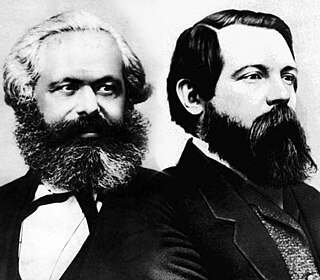Related Research Articles

Cyberspace is a concept describing a widespread interconnected digital technology. "The expression dates back from the first decade of the diffusion of the internet. It refers to the online world as a world 'apart', as distinct from everyday reality. In cyberspace people can hide behind fake identities, as in the famous The New Yorker cartoon." The term entered popular culture from science fiction and the arts but is now used by technology strategists, security professionals, government, military and industry leaders and entrepreneurs to describe the domain of the global technology environment, commonly defined as standing for the global network of interdependent information technology infrastructures, telecommunications networks and computer processing systems. Others consider cyberspace to be just a notional environment in which communication over computer networks occurs. The word became popular in the 1990s when the use of the Internet, networking, and digital communication were all growing dramatically; the term cyberspace was able to represent the many new ideas and phenomena that were emerging.

Manuel Castells Oliván is a Spanish sociologist. He is well known for his authorship of a trilogy of works, entitled The Information Age: Economy, Society and Culture. He is a scholar of the information society, communication and globalization.

Creative destruction is a concept in economics which since the 1950s is the most readily identified with the Austrian-born economist Joseph Schumpeter who derived it from the work of Karl Marx and popularized it as a theory of economic innovation and the business cycle. It is also sometimes known as Schumpeter's gale.
An information society is a society where the usage, creation, distribution, manipulation and integration of information is a significant activity. Its main drivers are information and communication technologies, which have resulted in rapid information growth in variety and is somehow changing all aspects of social organization, including education, economy, health, government, warfare, and levels of democracy. The people who are able to partake in this form of society are sometimes called either computer users or even digital citizens, defined by K. Mossberger as “Those who use the Internet regularly and effectively”. This is one of many dozen internet terms that have been identified to suggest that humans are entering a new and different phase of society.
Technological convergence, also known as digital convergence, is the tendency for technologies that were originally unrelated to become more closely integrated and even unified as they develop and advance. For example, watches, telephones, television, computers, and social media platforms began as separate and mostly unrelated technologies, but have converged in many ways into interrelated parts of a telecommunication and media industry, sharing common elements of digital electronics and software.
Social software, also known as social apps, include communication and interactive tools often based on the Internet. Communication tools typically handle the capturing, storing and presentation of communication, usually written but increasingly including audio and video as well. Interactive tools handle mediated interactions between a pair or group of users. They focus on establishing and maintaining a connection among users, facilitating the mechanics of conversation and talk. Social software generally refers to software that makes collaborative behaviour, the organisation and moulding of communities, self-expression, social interaction and feedback possible for individuals. Another element of the existing definition of social software is that it allows for the structured mediation of opinion between people, in a centralized or self-regulating manner. The most improved area for social software is that Web 2.0 applications can all promote cooperation between people and the creation of online communities more than ever before.
Network society is the expression coined in 1991 related to the social, political, economic and cultural changes caused by the spread of networked, digital information and communications technologies. The intellectual origins of the idea can be traced back to the work of early social theorists such as Georg Simmel who analyzed the effect of modernization and industrial capitalism on complex patterns of affiliation, organization, production and experience.
New media are forms of media that are computational and rely on computers and the Internet for redistribution. Some examples of new media are computer animations, computer games, human-computer interfaces, interactive computer installations, websites, and virtual worlds.

Urbanism is the study of how inhabitants of urban areas, such as towns and cities, interact with the built environment. It is a direct component of disciplines such as urban planning, which is the profession focusing on the physical design and management of urban structures and urban sociology which is the academic field the study of urban life and culture.
A community of place or place-based community is a community of people who are bound together because of where they reside, work, visit or otherwise spend a continuous portion of their time. Such a community can be a neighborhood, town, coffeehouse, workplace, gathering place, public space or any other geographically specific place that a number of people share, have in common or visit frequently. A community offers many appealing features of a broader social relationship: Safety, familiarity, support and loyalties as well as appreciation. Appreciation that is founded on efforts and contribution to the community, rather than the efforts, rank or status of an individual.
The following outline is provided as an overview of topics relating to community.

The Internet Galaxy: Reflections on the Internet, Business, and Society is a book by Manuel Castells, Professor of Sociology and Professor of City and Regional Planning at the University of California. It was published by Oxford University Press in 2001. The title is a reference to The Gutenberg Galaxy, a 1962 book by Marshall McLuhan. It is regarded as a good introduction to Social informatics.

The sociology of space is a sub-discipline of sociology that mostly borrows from theories developed within the discipline of geography, including the sub fields of human geography, economic geography, and feminist geography. The "sociology" of space examines the social and material constitution of spaces. It is concerned with understanding the social practices, institutional forces, and material complexity of how humans and spaces interact. The sociology of space is an inter-disciplinary area of study, drawing on various theoretical traditions including Marxism, postcolonialism, and Science and Technology Studies, and overlaps and encompasses theorists with various academic disciplines such as geography and architecture. Edward T. Hall developed the study of Proxemics which concentrates on the empirical analysis of space in psychology.

Cybernetics is a wide-ranging field concerned with regulatory and purposive systems. The core concept of cybernetics is circular causality or feedback—where the observed outcomes of actions are taken as inputs for further action in ways that support the pursuit and maintenance of particular conditions, or their disruption. Cybernetics is named after an example of circular causality, that of steering a ship, where the helmsperson maintains a steady course in a changing environment by adjusting their steering in continual response to the effect it is observed as having. Other examples of circular causal feedback include: technological devices such as thermostats ; biological examples such as the coordination of volitional movement through the nervous system; and processes of social interaction such as conversation. Cybernetics is concerned with feedback processes such as steering however they are embodied, including in ecological, technological, biological, cognitive, and social systems, and in the context of practical activities such as designing, learning, managing, conversation, and the practice of cybernetics itself. Cybernetics' transdisciplinary and "antidisciplinary" character has meant that it intersects with a number of other fields, leading to it having both wide influence and diverse interpretations.
A distributed workforce is a workforce that conducts remote work. A distributed workforce is dispersed geographically over a wide area – domestically or internationally. Via technology, distributed companies enable employees located anywhere to access all of the company's resources and software such as applications, data and e-mail without working within the confines of an office.
Networked advocacy or net-centric advocacy refers to a specific type of advocacy. While networked advocacy has existed for centuries, it has become significantly more efficacious in recent years due in large part to the widespread availability of the internet, mobile telephones, and related communications technologies that enable users to overcome the transaction costs of collective action.
The Information Age: Economy, Society and Culture is a trilogy of books by sociologist Manuel Castells: The Rise of the Network Society (1996), The Power of Identity (1997), and End of Millennium (1998). The second edition was heavily revised; volume one is 40 per cent different from the first edition.

The concept of networked swarming warfare was first proposed by HUO Dajun in 2003. The key feature of the information age is the networking of organizational structure. The rising networked organization will overcome the limitation of traditional geography and link the operational resources distributed widely to form a military action network which combine strike range, speed and lethality, three elements of originally different developing, fundamentally transforming our idea of battle space. With the trend of decentralization of forces, we need to develop more small units with independent combat functions; meanwhile we can join these small units into a whole network as the technology's development. The warfare based on this network is called networked swarming warfare.
A social learning network (SLN) is a type of social network that results from interaction between learners, teachers, and modules of learning. The modules and actors who form the SLN are defined by the specific social learning process taking place.
Project network — is the technological framework, an online service or the web site intended for provision of a possibility of self-organization to the participants possessing key competences in project team for execution of actions with initially set purposes, achievement of which defines project completion.
References
- 1 2 Castells, Manuel. "An Introduction to the Information Age" in The Information Society Reader, Frank Webster, Raimo Blom, Erkki Karvonen, Harri Melin, Kaarle Nordenstreng, and Ensio Puoskari, editors. London and New York: Routledge, 2004. pp 138–49.
- ↑ Manuel Castells (1999). "Grassrooting the Space of Flows". Urban Geography. 20 (4): 294–302. doi:10.2747/0272-3638.20.4.294.
- ↑ "Informationalism and the Network Society" in The Hacker Ethic and the Spirit of the Information Age (2001), by Pekka Himanen, New York, Random House pp. 155–78
- ↑ Stalder, Felix. The Status of Objects in the Space of Flows . University of Toronto (2003). 13 February 2006.